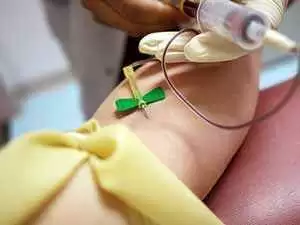Celiac.com 02/09/2006 - Do not try this at home. If you have celiac disease you need to remain on a gluten-free diet. This particular study, as indicated below, involved only one person--which is far too small of a sample to draw any solid conclusions from. It does, however, offer some hope that there may be other unknown factors that cause this disease--perhaps factors that can be reversed or kept in check. Many more studies will be needed to determine this. After reading and publishing much of Roy Jamrons work, we thought his comments on this study were very interesting and have reproduced them here.
Celiac.com Sponsor (A12):
Comments by Roy Jamron:
This is interesting, a case of reintroducing gluten to a celiac woman after a 10 year gluten-free diet with no symptoms of celiac disease showing up during a 15 month follow up study. It would be interesting if she remains symptom free in subsequent years.
It does bring up the idea of a gluten-ingesting bacteria link which I proposed in my article, Open Original Shared Link. In that article I proposed that a bacteria capable of transporting and internalizing gluten peptides resistant to breakdown could initiate a T cell immune response to gluten. Antigen presenting cells (dendritic cells) might present gluten peptides internalized by the bacteria along with peptides and chemical signals from the bacteria to T cells. The T cells would not be able to distinguish the gluten peptides from the bacteria peptides and would, therefore, initiate an immune response to gluten peptides as though they were components from pathogenic bacteria. The presence or non-presence of such a bacteria in twins offered an explanation as to why one identical twin could develop celiac disease and not the other.
After 10 years on a gluten-free diet, it is possible that the numbers of such gluten-ingesting bacteria might diminish to a level too few to initiate a gluten immune response, especially if the bacteria largely depend on gluten for nutrition. So, like the twin who does not develop celiac disease, she remains symptom free.
I urged researchers to look for such gluten-ingesting bacteria in my article, and I continue to urge such research. Such bacteria could be found through the use of immunogold electron microscopy. This technique permits gluten peptides to be bound to and labeled with gold particles which show up as distinct opaque spots under the electron microscope. Such spots found within microscopic cross sections of fecal bacteria samples would identify gluten-ingesting bacteria.
Abstract of Study:







Recommended Comments